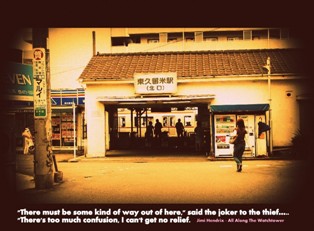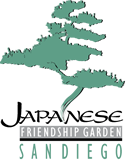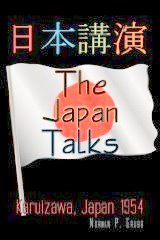Friday, November 18, 2022
Monday, November 14, 2022
Japan turns to its own military
Japan turns to its own military
For decades, Japan has depended on the U.S. military for protection. Now, as regional threats mount and the war in Ukraine raises alarms, Japan is pushing to increase its own defenses. |
The governing party has sought to drastically increase Japan’s defense budget and develop more military hardware domestically. The government is also trying to redefine what it can do with such weapons under the country’s pacifist Constitution, which has been in place since the end of World War II. |
By asserting its own deterrent power, Japan — the world’s third-largest economy — could become less a military protectorate of the U.S. and more an equal partner. The effort is intended not to distance it from the protective umbrella, but to ensure that Tokyo’s bond with Washington remains strong. |
In so doing, Japan could alter the balance of power in Asia and become a stronger counter to China — which it does not want to antagonize — and North Korea. Both have sent missiles uncomfortably close to Japan in recent months. |
Background: Japan hosts the largest contingent of overseas U.S. troops and has bought more U.S.-made F-35 stealth fighter jets than any country other than the U.S.
Tuesday, November 08, 2022
Know differences between Japan’s temples and shrines
Know differences between Japan’s temples and shrines
People may be surprised to hear that Japan has more temples (77,000) and shrines (81,000) than convenience stores (48,908). But according to the Agency for Cultural Affairs, it’s true. When it comes to the differences between these two types of sanctuaries, however, the equation is not so simple.
Many of my foreign friends ask me, “What’s the difference?” Honestly, even for Japanese, it’s a little obscure. We don’t really put too much value on which of these places we go to pray. We put more value on going someplace to pray. Sometimes, a temple and shrine can even look similar. They may even be on the same grounds. So, what is the difference, anyway?
The simplest answer is that a shrine is a Shinto place of worship and a temple is for Buddhism.
Shinto is Japan’s indigenous animistic religious practice in which “kami,” or gods, are prayed to or worshiped. These kami can be spirits of nature, such as the sun, mountains and other landforms, or people (usually, the deceased). Shinto literally means “The Way of the Gods.” The practice varies a lot, and there is no single book, like a Bible, that defines it.
“Shrines are the houses of the gods. It is advantageous for local residents to visit local shrines to pray or receive exorcisms,” said Masato Hoshi a priest at Suzukamyo Shrine in Kanagawa. “Shinto originally began as nature worship because gods are believed to be in all living nature. Eventually the worship of ancestors was added to it. Today, Shinto is comprised of various gods.”
 Buddhism
came to Japan in the sixth century and took root after a few initial
conflicts between its adherents and Shinto practitioners. Despite the
early tensions, the two faiths were soon coexisting and
cross-pollinating, according to Shinko Mibu, a monk in Sensoji Temple in
Tokyo.
Buddhism
came to Japan in the sixth century and took root after a few initial
conflicts between its adherents and Shinto practitioners. Despite the
early tensions, the two faiths were soon coexisting and
cross-pollinating, according to Shinko Mibu, a monk in Sensoji Temple in
Tokyo.
“Buddhism was spread by the political authorities after it was introduced in Japan,” said Mibu. “It was a big part of their political strategy to spread the new religion to influence people. Buddhism gradually spread and became mainstream by mixing with Shintoism.
“One reason Buddhism became mainstream is that its methods are more systematic and theoretical, having journeyed so long through India and China,” said Mibu. “But Shintoism did not even have a written book or (specific) teaching, so Buddhism (in Japan) began incorporating Shinto gods into its theoretical stories.”
The mixture of Shinto and Buddhism is called “Shinbutsu shugo,” a kind of intuitional harmonizing of the two faiths that took place from about A.D. 710 to 1868. It evolved into the belief that Shinto gods are actually various manifestations of Buddha, according to Mibu. Except for Ise Jungu Shrine in Mie Prefecture and a few others, most shrines were placed under Buddhist control. Over time, shrines and temples became virtually indistinguishable.
In 1868, however, the new Meiji government sought to restore the legitimacy and power of the emperor using the idea he was a Shinto divinity. It made Shintoism the state religion, priests state officials and began funding some shrines. Buddhist influences were removed from shrines nationwide. Some Shinto activists interpreted the change as implying that Buddhism should be abolished, leading to the “Haibutsfu kishaku” movement which destroyed many temples and historical Buddhist treasures.
Today, however, many Shinto objects can still be found in Buddhist temples and vice versa, proof of the historic and perhaps irreversible coexistence of the two faiths in Japan. These days, many shrines and nearby temples remain friendly neighbors.
“It is very difficult to explain and understand Japanese religion because it is not monotheistic.” said Mibu.
His home temple, Sensoji, was built in the seventh century and is Tokyo’s oldest. Well-known adjacent Asakusa Shrine was built about 300 years later – as an attachment to the temple. They were separated during the Meiji Era (1868-1912).
“Until the separation, Asakusa shrine was used and run by the monks of Sensoji,” said Mibu. “It is interesting that there are more new shrines in Japan than new temples. It is very unique that Shintoism can make someone a god after his or her death. For example, Togo shrine was built to enshrine Heihachiro Togo (1848-1934), the Imperial Japanese Navy fleet admiral.”
After my interview with Mibu, I visited both Sensoji Temple and Asakusa Shrine to pray. Both places are open to anyone, though there are several different rules to follow for each. It was a great opportunity to get a glimpse of the sanctity and diversity of both these historic religions in Japan.
“There are many customs to observe when you visit a shrine, but it is ok if you’re not doing it right,” said Suzukamyo Shrine’s Hoshi. “It would be nice if you remember to bow twice, clap twice and bow once more when you pray at shrine. And also, it is OK if you visit either shrine or temple for ‘hatsumode,’ (first temple or shrine visit of the year).”
Sacred Okinawan sites
 Although
there are many Shinto shrines and temples in Okinawa, Okinawans have
had their own indigenous religion called Nirai Kanai from ancient times.
Also known as Ryukyu Shinto, it is similar to Shinto in that it is
based on nature and ancestor worship. Nirai Kanai practitioners pray and
venerate their gods and ancestors at sacred places called “utaki,”
which are usually located on the outskirts of villages.
Although
there are many Shinto shrines and temples in Okinawa, Okinawans have
had their own indigenous religion called Nirai Kanai from ancient times.
Also known as Ryukyu Shinto, it is similar to Shinto in that it is
based on nature and ancestor worship. Nirai Kanai practitioners pray and
venerate their gods and ancestors at sacred places called “utaki,”
which are usually located on the outskirts of villages.
According to Nirai Kanai belief, the god Amamikiyo created the ancient Ryukyu Kingdom. Nirai Kanai refers to a paradise which exists far away to the east across the ocean. Once a year, gods are said to come from Nirai Kanai bestowing blessings on the people and good harvests. It is also thought that the human soul comes from Nirai Kanai and returns there when people die. Utaki are sacred places used to commune with this realm.
While some utaki are manmade places of worship, they are often largely unaltered natural areas such as a tree-ringed grove, hills or cliffs with a grouping of stones. People worship and pray at utaki by offering incense, flowers and food. It was once widely held that only women should approach utaki (unlike Shinto which has priest, Nirai Kanai has priestesses), and the gods would punish men who did so. It is strongly believed that natural objects should not be removed and vegetation should not be harmed at an utaki.
Okinawa’s most sacred utaki is Sefa Utaki in southeastern Okinawa. This UNESCO World Heritage Site is a series of trails and Ryukyu altars in the jungle atop limestone cliffs that overlook the Pacific Ocean.
– Stripes Okinawa
Popular temples and shrines
Meiji Jingu Shrine, Tokyo
www.meijijingu.or.jp/english/index.html
Kawasaki Daishi Temple, Kangawa
www.kawasakidaishi.com/english/index.html
Tsurugaoka Hachimangu Shrine, Kanagawa
Visiting Shinto shrines
 Shinto
priests serve at shrines. People usually visit shrines for weddings,
New Year’s, Shichigosan (Japan’s holiday celebrating when girls turn
ages 3 and 7, and boys turn ages 3 and 5.), Setsubun (Bean-Throwing
Festival) and other festivals. Newborn babies are traditionally brought
to a shrine a few weeks after birth.
Shinto
priests serve at shrines. People usually visit shrines for weddings,
New Year’s, Shichigosan (Japan’s holiday celebrating when girls turn
ages 3 and 7, and boys turn ages 3 and 5.), Setsubun (Bean-Throwing
Festival) and other festivals. Newborn babies are traditionally brought
to a shrine a few weeks after birth.
Traditionally, you should not visit a shrine if you are sick, have an open wound or are in mourning because these are considered causes of impurity. Photography is usually permitted at shrines. Watch for signs.
Torii:
The torii gate is the boundary between a shrine’s holy grounds and the
secular world. Passing through the torii gate signifies entering the
enshrined deity’s domain. Bowing once in front of the gate is proper
etiquette, as is passing through it a little to the side instead of the
center were the deity is supposed to walk.
Fountain:
To use the purification fountain near a shrine’s entrance, fill one of
the ladles with the water and rinse both hands. Then transfer some water
into your cupped hand, rinse your mouth and spit the water out beside
the fountain. Don’t drink from the ladle or swallow the water.
Prayer offering:
- Bow once and drop a coin into the offering box.
- Bow deeply twice.
- Clap your hands twice.
- Bow deeply one more and pray for a few seconds.
Visiting Buddhist temples
 Buddhist
monks serve at temples. People usually visit temples for New Year’s,
funerals and to visiting family graves on the grounds.
Buddhist
monks serve at temples. People usually visit temples for New Year’s,
funerals and to visiting family graves on the grounds.
When entering temple buildings, you may need to remove your shoes. Leave them on the shelves at the entrance or take them with you in the plastic bags some temples provided. Wear nice socks. Photography is usually permitted on temple grounds, but forbidden inside some temples. Watch for signs.
Bell:
Bells are used for Buddhist ceremonies such as “Jyoyanokane” purification rites. They are also used to indicate the time.
Incense Burner:
To use the “jyokoro,” or large incense burner, for a healing, buy an
incense bundle at the temple, light then extinguish it with a hand wave
so it smokes; place it in the burner, lit side up. Fan some of the smoke
toward whatever part of your body needs healing.
Prayer offering:
- Bow and drop a coin into the offering box.
- Put your palms together (do not clap) in front of your chest and pray.
- Bow.
Holiday blessings
In Japan, New Year’s is the biggest holiday of the year. It is one of the few times many Japanese will visit temples and shrines, and a perfect opportunity to see Japan’s religious culture and traditions.
On New Year’s Eve, many Japanese flock to temples and shrines to ring in the new year – literally. Buddhist temples nationwide ring a large bell 108 times before midnight for the “Jyoyanokane,” a ceremony to cleanse humanity of the 108 sins recognized by Buddhism.
Tens of thousands visit temples for “Jyoyanokane” no matter how cold the outside air is, even when it’s snowing. Many booths are set up in temples to sell traditional foods to visitors. After midnight, many stay at temples to pray for the new year.
 Millions
also visit shrines or temples between Jan. 1 to 3 for “hatsumode,” the
traditional first temple or shrine visit of the year. The National
Police Agency estimates that 99.4 million people visited sanctuaries for
this tradition in January 2015.
Millions
also visit shrines or temples between Jan. 1 to 3 for “hatsumode,” the
traditional first temple or shrine visit of the year. The National
Police Agency estimates that 99.4 million people visited sanctuaries for
this tradition in January 2015.
The practice is believed to be a derivative of “toshigomori,”secluding oneself in the shrine of his or her patron deity for an all-night New Year’s Eve vigil. Hatsumode may also be base an old tradition of making a pilgrimage to a shrine or temple that is located in a direction determined by the zodiac of each new year.
Such traditions may have faded, but the advent of modern transportation fueled today’s trend of visiting some of Japan’s more famous temples and shrines during the New Year’s holiday, according to Shinko Mibu, a monk in Sensoji Temple in Tokyo.
“The bottom line is that whether visiting a temple or shrine, Japanese people just like touching something within that’s deeper than the outside world,” said Mibu. “When people come to shrines or temples to pray, it is the time to touch the nothingness. So, if foreign people want to come to hatsumode to shrine or temple, please feel the nothingness in you. On a deeper level, it is the same as when they visit their own religious place like a church.”
Lucky offerings
For luck, use a coin that has a hole in it (5 yen and 50 yen) when making offerings in temples and shrines.













